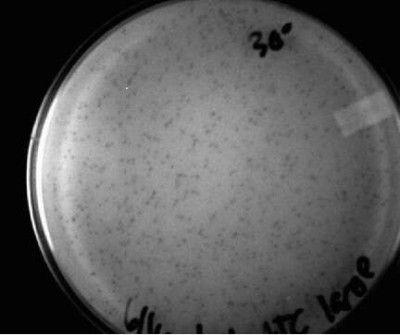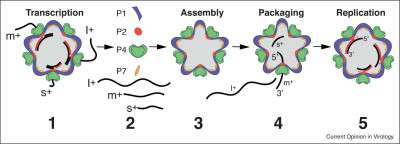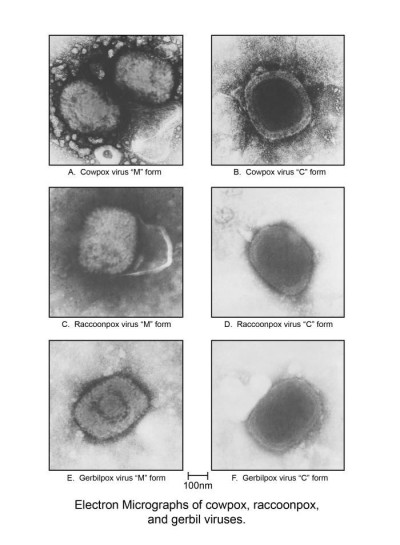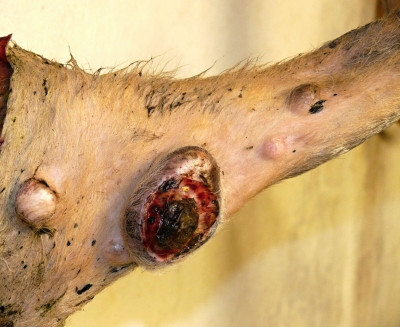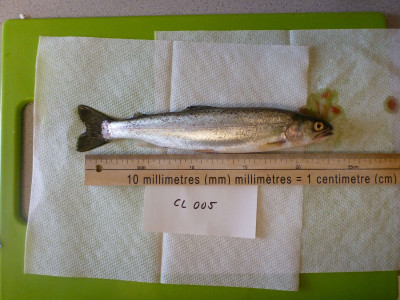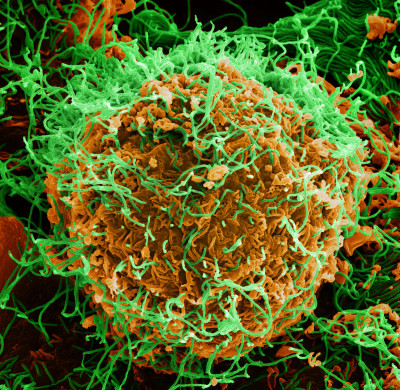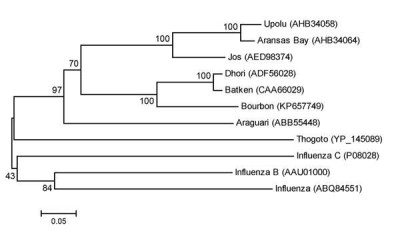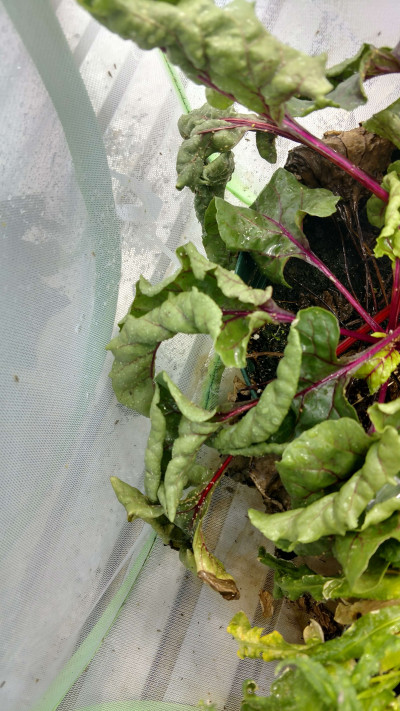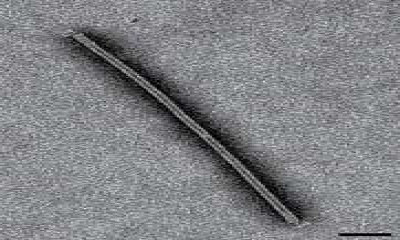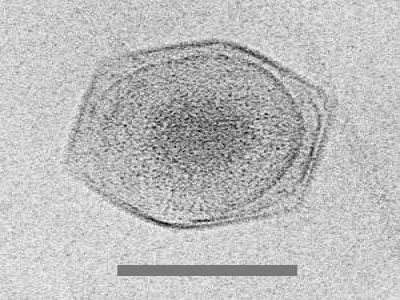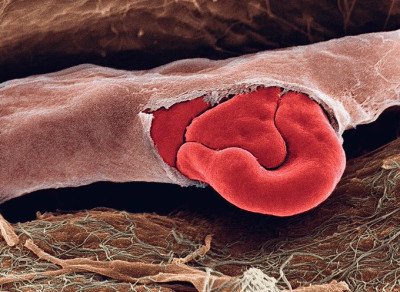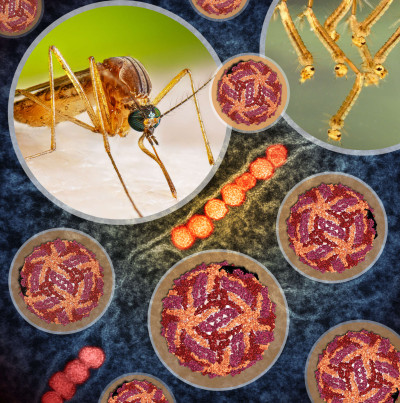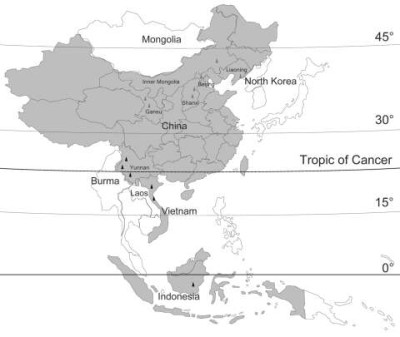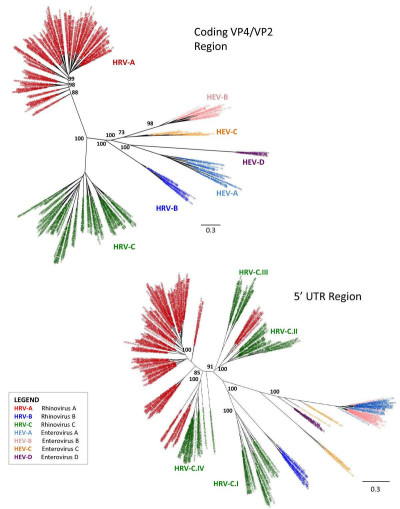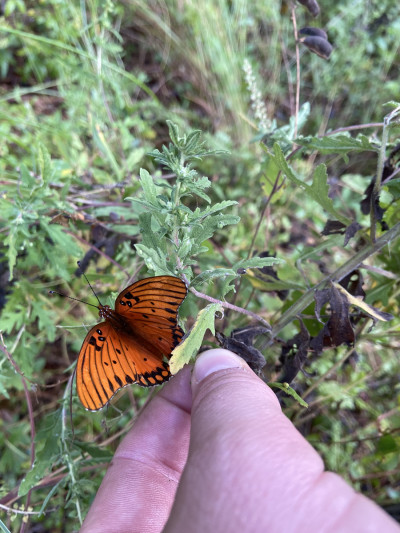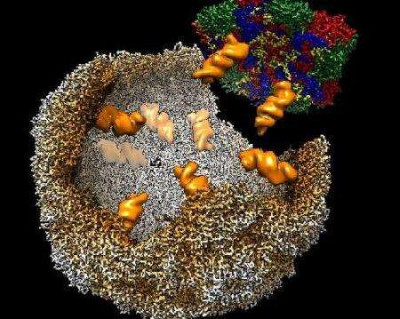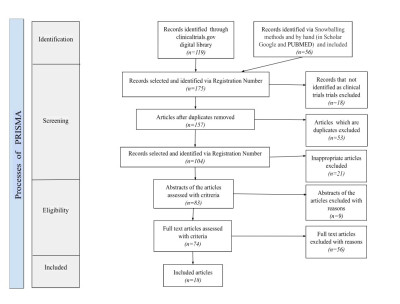Assembly and pre-genome packaging in members of the Cystoviridae family. (1) Newly transcribed l+, m+, and s+RNAs are extruded from the procapsid. (2) Viral proteins P1 (core protein, purple), P2 (RdRP, red), P4 (RNA helicase/packaging motor, green), and P7 (assembly co-factor, yellow) co-assemble (3) forming new empty procapsids. (4) Assembled procapsids sequentially recruit RNAs, which are translocated inside the core by a hexameric packaging motor P4 in the order s+, m+, and l+. RNA packaging results in expansion of the procapsid. (5) After packaging, multiple + RNAs are replicated inside the procapsid by P2, forming dsRNAs. [1]
Wikimedia Commons, Alexander Borodavka, Ulrich Desselberger, and John T Patton
02 Apr 2024
This montage of six transmission electron micrographs (TEM) depicted three different Poxviridae family members, and their morphologic similarities in both their M, or mulberry form, and their C, or capsular form. The three viruses include the cowpox, raccoonpox, and the gerbilpox viruses. The Poxviridae viruses carry at their core, a genome composed of a single, linear double-stranded DNA segment. Before its eradication, one of the most infamous viruses known, the smallpox virus, Variola major, was a member of this family.
Public Health Image Library
02 Apr 2024
Tumor of papillomatosis on the inner side of the hind limb of a roe deer.
Wikimedia Commons, Karel Muška
02 Apr 2024
Two scientists, including one at Simon Fraser University (SFU), have discovered evidence of a potentially deadly virus in Cultus Lake cutthroat trout. Thirteen of 15 sampled fish tested positive for piscine reovirus (PRV).
Wikimedia Commons, Simon Fraser University
02 Apr 2024
Colorized scanning electron micrograph of Ebola virus particles (green) both budding and attached to the surface of infected VERO E6 cells (orange). Image captured and color-enhanced at the NIAID Integrated Research Facility in Fort Detrick, Maryland.
Wikimedia Commons, NIAID
02 Apr 2024
Colorized transmission electron micrograph of monkeypox particles (pink) found within an infected cell (green), cultured in the laboratory. Image captured and color-enhanced at the NIAID Integrated Research Facility (IRF) in Fort Detrick, Maryland.
Wikimedia Commons, NIAID
16 Apr 2024
Phylogeny of deduced amino acid sequences of Bourbon virus in comparison to homologous sequences of selected orthomyxoviruses. A neighbor-joining method was used for inference of each phylogeny with 2,000 replicates for bootstrap testing. Values at nodes are bootstrap values. Based on nucleocapsid protein (segment 5). Scale bar indicates number of amino acid substitutions per site.
Wikimedia Commons, Olga I. Kosoy, Amy J. Lambert, Dana J. Hawkinson, Daniel M. Pastula, Cynthia S. Goldsmith, D. Charles Hunt, and J. Erin Staples
18 Apr 2024
A beet plant displaying symptoms of infection by beet curly top virus.
Wikimedia Commons, Horticulturalist RJ
23 Apr 2024
Family Rudiviridae, genus Usarudivirus: Electron Micrograph of Sulfolobus islandicus rod-shaped viruses SIRV5 stained with 2% uranyl acetate. Scale bar 100 nm. [1]
Wikimedia Commons, Maria A. Bautista, Jesse A. Black, Nicholas D. Youngblut, Rachel J. Whitaker
24 Apr 2024
Cryo-electron micrograph of Cafeteria roenbergensis virus (CroV) particle. Scale bar represent 2,000 Å. [1]
Wikimedia Commons, Xiao, C., Fischer, M.G., Bolotaulo, D.M., Ulloa-Rondeau, N., Avila, G.A., and Suttle, C.A
18 Apr 2024
Under 3,000x magnification, red blood cells can be seen squeezing out of a ruptured capillary. This tiny blood vessel, the smallest in the body, is just wide enough for red blood cells to pass through in single file. The rupture highlights the delicate nature and vital role of capillaries in circulation.
08 Jul 2024
Artwork featuring a female Culex quinquefasciatus mosquito—which transmits West Nile virus (image courtesy of CDC), Culex mosquito larvae(image courtesy of CDC), a cryo-EM reconstruction of West Nile virus (courtesy of NIH 3D Print Exchange), and a transmission electron micrograph of West Nile virus particles (orange) replicating within the cytoplasm of an infected VERO E6 cell (blue), captured at the NIAID Integrated Research Facility (IRF) in Fort Detrick, Maryland.
Wikimedia Commons, National Institute of Allergy and Infectious Diseases and Centers for Disease Control and Prevention
01 Feb 2024
Location of new Banna viruses (BAVs) isolated in China (red triangles) and previously reported BAV isolation sites (black triangles). Countries reporting isolation of BAV are shaded. The names of the countries that are contiguous with BAV isolation sites are labeled. BAV distribution sites in Indonesia, Vietnam, and part of China are located in tropical zones, which lie predominantly between the Tropic of Cancer and the equator. Most BAV distribution sites in China in the area from the Tropic of Cancer to latitude 45°N belong to the northern temperate zone. [1]
Wikimedia Commons, Liu H, Li M, Zhai Y, Meng W, Sun X, Cao Y, et al
23 Feb 2024
This illustrates that recombination events are much more prevalent in the untranslated regions (UTRs) compared with a translated region (VP4/VP2). Separate alignments of the coding (VP4/VP2; 464 nt) and untranslated (5’UTR; 555 nt) regions’ sequences were constructed using MUSCLE v.3.8.31. Maximum likelihood phylogenetic trees were inferred separately for the non-coding and coding regions using PhyML v.3.0 using a general-reversible substitution model with gamma-distributed among-site rate variability. Samples are labeled by following format: “Sample code / Country of collection / Month- Year of collection.” Phylogenetic trees were colored by HRV species: HRV-A, HRV-B, HRV-C, and four types of HEV (HEV-A, HEV-B, HEV-C and HEV-D). In addition, four HRV-C clades show different recombination events and these are denoted individually as HRV-C.I to IV.
Wikimedia Commons, Garcia, J., Espejo, V., Nelson, M. et al., BioMed Central Ltd
01 Mar 2024
Highlighted in the picture is a Gulf fritillary (Dione vanillae) butterfly found around the coastal Louisiana region.
11 Mar 2024
Morphology of a newly discovered betapartitivirus of R. necatrix. Electron microscopy of Rosellinia necatrix partitivirus 11 (RnPV11) virions.[1]
Telengech P, Hisano S, Mugambi C, Hyodo K, Arjona-López JM, López-Herrera CJ, Kanematsu S, Kondo H and Suzuki N, Wikimedia Commons
13 Mar 2024
 Encyclopedia
Encyclopedia
